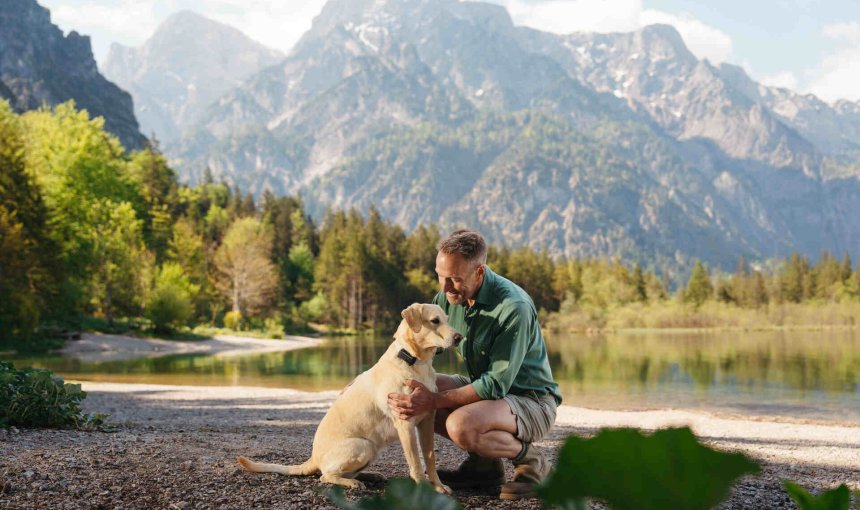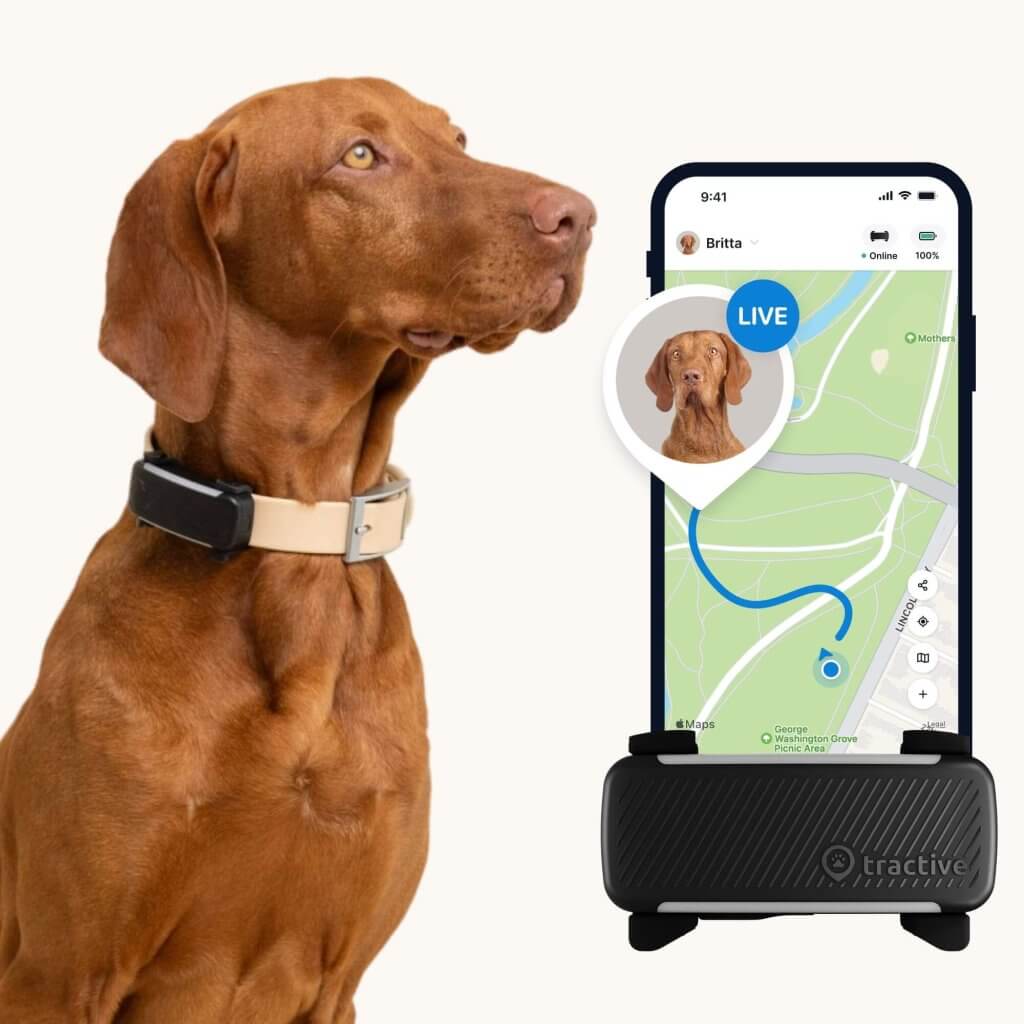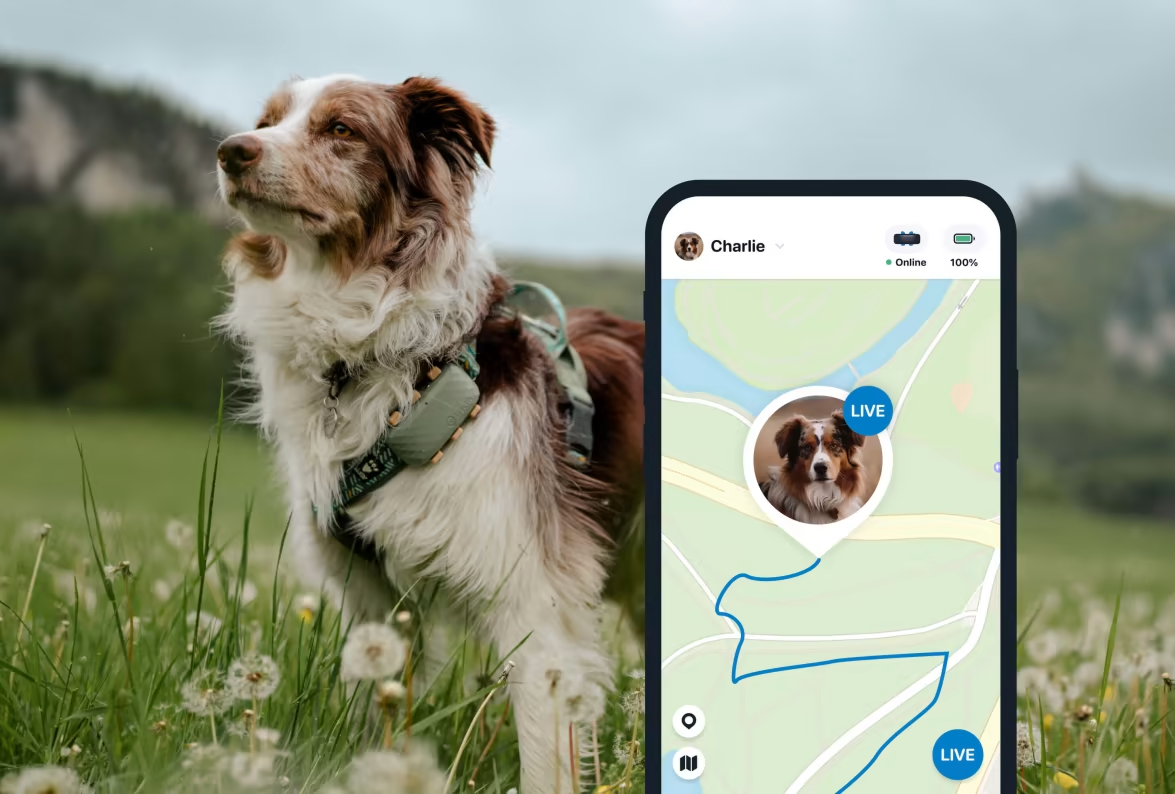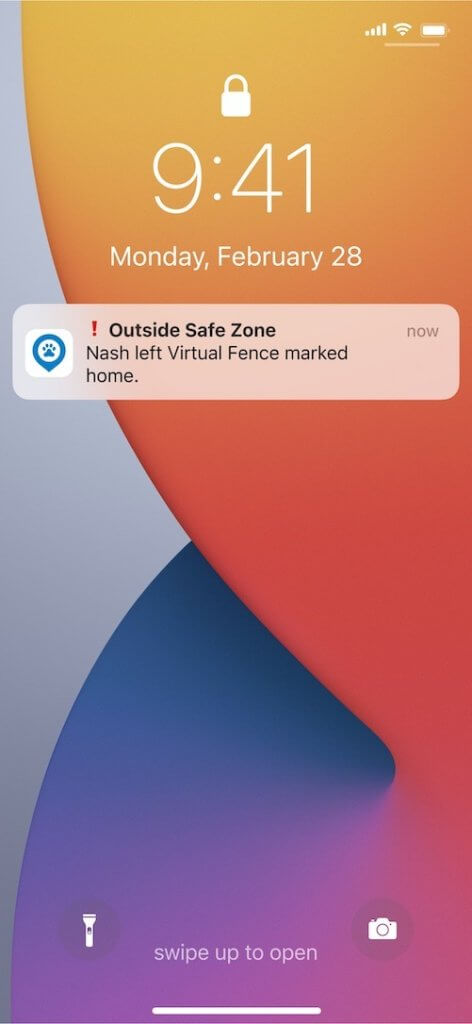How to Comfort A Dog In Heat (Without Losing Your Mind)
A dog's heat cycle is a natural part of their growth - but it can be a stressful one. Here's how you can manage it like a pro.

Watching your dog go through her heat cycle for the first time can be a confusing experience. Maybe she’s more restless, a bit clingy, or just seems “off.” It’s natural to want to know how you can make her feel better. Here’s a guide on how to comfort a dog in heat and help them stay calm, comfortable, and happy during this process. (And where a smart dog tracker with real-time GPS & Health Monitoring can prevent an emergency.)
Key Takeaways
A dog’s heat cycle is a natural process that lasts 2-4 weeks, bringing physical and behavioral changes, including a strong urge to escape.
You can comfort your dog by creating a calm space, maintaining a routine, and offering plenty of mental stimulation to keep her happy and distracted. Getting her spayed can help reduce any heat-related wacky behaviors.
You can keep your dog safe during this time by always keeping her on a leash, ensuring your home is secure, and informing neighbors with male dogs about her cycle.
If you’re waiting for a spay or neuter appointment, a smart dog tracker – like Tractive – can be a helpful emergency solution, with real-time location and Health Monitoring.

Always know your buddy is healthy & safe
Read more- Key Takeaways
- Understanding your dog’s heat cycle
- Signs your dog is in heat: What to expect
- How to comfort a dog in heat: Steps you can take
- Should I let my dog lick herself during heat?
- More ways to keep your dog safe when she’s in heat
- My male dog has sniffed out a female in heat – what can I do?
- Why it’s a good idea to get your dog spayed or neutered
- How a smart dog tracker can provide peace of mind
Understanding your dog’s heat cycle
The heat cycle, also known as estrus, is when a female dog is receptive to breeding. A typical heat cycle lasts for about 2-4 weeks, with the most fertile period usually occurring in the middle. The most important thing to remember is that this is a natural biological process. It’s not a sickness. The goal isn’t to “cure” it, but to manage the symptoms and provide her with a supportive environment. The mess and behavioral changes are temporary, and with your help, she can get through it comfortably.
Signs your dog is in heat: What to expect
During this time, you’ll likely notice a mix of physical and behavioral changes. The most obvious physical signs are a swollen vulva and a bloody discharge, which can vary in intensity from dog to dog. You might also notice her urinating more frequently, as this is another way dogs communicate their availability. Some dogs may also experience a decrease in appetite.
Your dog’s behavior might also shift dramatically. (Though it does differ from dog to dog.) She could become more agitated, restless, or even anxious. Some dogs become extra affectionate and clingy, while others prefer to be left alone and may seem a bit withdrawn. She might also become more vocal and restless, especially when she smells a male dog nearby. Due to the strong biological urge to find a mate, she might be so determined that she tries to escape from home! This is a common and dangerous behavior for dogs in heat.
💡A smart dog tracker with real-time GPS tracking can be an important emergency measure during this time. If you suspect you’ll be dealing with a “missing dog” situation, you can now track your dog’s live location with just a glance at your phone – and intercept them before they wander off too far.

Follow your dog anywhere
Get real-time location information, wherever they go. And find out when they try to make an escape, or just when they go somewhere they shouldn’t, with Virtual Fences.
How to comfort a dog in heat: Steps you can take
Create a calm, quiet space
Your dog’s hormones are on a rollercoaster, and she might be feeling overwhelmed. Designate a quiet, cozy spot in your home with her favorite blanket and toys where she can retreat when she needs peace and quiet. This space should be in a low-traffic area of the house, away from the front door or windows where she might see or smell other dogs. Having a designated “safe zone” will give her a predictable place to decompress and can help reduce her overall anxiety.
Maintain a routine
Stick to her regular feeding schedule and walk times (leashed, of course!). This sense of normalcy can be very calming and reassuring. Even if she seems a little lethargic or uninterested, a short, calm walk is still important for her physical and mental well-being. Keeping her routine consistent helps her feel a sense of security when her body is going through so many changes.
Keep your dog mentally active
During her heat cycle, your dog might have more pent-up energy and restlessness. Distract her with puzzle toys, a stuffed KONG, or a chew bone. These activities engage her brain and can help take her mind off her physical discomfort. You can also try teaching her a new simple trick or doing some basic scent work games around the house to keep her mind busy and tire her out in a productive way.
Use doggy diapers
Let’s be real, the mess can be a challenge. Doggy diapers are a lifesaver for keeping your home clean. Make sure to change them frequently to prevent irritation and practice good hygiene. You should also take them off for short periods to allow her skin to breathe. When you first introduce them, give her a treat and lots of praise so she associates the diaper with a positive experience.
Give your dog a ton of cuddles – or space
Some dogs crave extra cuddles during this time, while others want their personal space. Pay attention to her signals. If she’s seeking comfort, give her gentle pets and attention. If she’s tense or moving away, give her a break and let her relax on her own. It’s all about reading her body language and respecting her needs as her emotions and energy levels fluctuate.
Should I let my dog lick herself during heat?
Yes, and for most dogs, this self-grooming behavior is harmless. It’s completely normal for a dog in heat to lick herself more than usual. This is her natural way of keeping herself clean and hygienic during this time.
However, do keep an eye on her to make sure she doesn’t overdo it. Excessive licking can lead to skin irritation, soreness, or even a secondary infection. If you notice the licking seems obsessive or if the area looks inflamed, it might be necessary to use a protective cone (E-collar) for a short period. This should be a last resort and it’s always best to consult with your vet if you have concerns.
More ways to keep your dog safe when she’s in heat
This is a time when your dog’s instincts are heightened, and her safety is a top priority. A female dog in heat will attract male dogs from surprisingly far away, so it’s crucial to be extra vigilant. Always keep her on a leash during walks, even in fenced-in areas you consider secure, as male dogs can be very determined to get to her. Never leave her unattended in the yard, and be sure to double-check that all gates and fences are properly latched. Here are some dog fence ideas to keep them securely indoors.
It’s also a good idea to inform your immediate neighbors that your dog is in heat. This allows them to take precautions and keep their male dogs contained, preventing any unwanted interactions or escape attempts.
Ensuring your dog has proper ID is always important, but it’s especially vital during her heat cycle. Make sure she has a collar with an up-to-date ID tag at all times. We also highly recommend getting your dog microchipped. If she were escapes, a microchip provides a permanent form of identification that can be scanned by a veterinarian or shelter, significantly increasing the chances of her safe return.
My male dog has sniffed out a female in heat – what can I do?
If you have an un-neutered male dog and a female in heat is nearby, watch out. His natural instincts will take over, and he might become intensely focused on the scent, ignoring your commands. Common behaviors include whining, barking, restlessness, a loss of appetite, and an obsessive desire to escape to find the female dog.
To help him (and yourself) get through this, the best strategy is to manage the environment and redirect his focus. First, keep him indoors and away from any open doors or windows where the scent is strongest. Keep him busy with puzzle toys or new training exercises to give him a different focus. You can also try to tire him out with a vigorous play session or a long walk in a neutral area where you’re sure there are no other dogs.
Patience is key, as this is a powerful biological drive. Avoid punishing your dog for his behavior, as this will only increase his stress and anxiety.
Why it’s a good idea to get your dog spayed or neutered
Female dogs usually go into heat cycles around twice a year – but getting them spayed can reduce much of the ‘crazy’ behavior around these times. Spaying is a simple surgical procedure that comes with a ton of benefits, both for your dog and the wider dog community. The most obvious benefit is population control. It’s a critical step in preventing unwanted litters and reducing the number of dogs in shelters.
For female dogs, spaying can also greatly reduce the risk of certain serious health conditions. It completely eliminates the risk of pyometra, a life-threatening uterine infection that is common in un-spayed dogs. It also significantly lowers her chances of developing mammary tumors, especially if the procedure is done before her first heat cycle.
For male dogs, neutering offers its own set of health and behavioral advantages. It eliminates the risk of testicular cancer and can prevent some prostate problems. Behaviorally, it often reduces the strong urge to roam, which is a common and dangerous instinct, and can help decrease certain forms of aggression and marking territory.
Your vet can best advise you on the timing and benefits of spaying or neutering your dog. In the long run, it’s one of the most compassionate decisions you can make for their health and well-being.
How a smart dog tracker can provide peace of mind
While you’re waiting for your dog to be spayed or neutered, a smart dog tracker can be an invaluable emergency solution. Your trusty Tractive device isn’t just for locating your dog. It’s a comprehensive health and safety monitor that can help you keep a close eye on her during this sensitive time.

Strapped to your dog’s collar, you can now:
- Track your dog in real-time
A dog in heat is driven by a strong biological urge to find a mate. This means she might be more likely to try to escape the yard or run off during a walk. Tractive’s real-time GPS tracking helps you to know exactly where she is at all times. Besides, unlike an AirTag, your Tractive device doesn’t need a network of compatible devices to work. Nor are you limited by any range. - Prevent them from escaping home
Set up a “safe zone” from your Tractive mobile app – or a “no go zone”, like your neighbor’s backyard. Now if your dog ventures out of a safe zone or enters a no go zone, you’ll get an escape alert on your phone.


- Keep an eye on your dog’s health
Hormonal changes can mess with her sleep patterns and energy levels. By monitoring her sleep and activity levels with Tractive, you can establish a baseline for what’s normal for her. If you notice a significant drop in her activity or a big change in her sleep, it could be a sign she’s feeling unwell or uncomfortable. - Spot potential health issues early
Tractive can also send you Health Alerts if it detects an unusual change in your dog’s health data. So with this information at hand, you’ll be more likely to have a productive conversation with your vet.
Ultimately, a dog’s heat cycle is a natural part of life, but it doesn’t have to be a stressful one. By understanding what to expect, creating a calm space, and discussing your spaying options with your vet, you can navigate this time with confidence. Your care and attention will make all the difference, ensuring your furry friend stays happy and safe.
And if you’ve liked this post, share it with a friend or a loved one – and let’s help build a safer, kinder world for our furry friends together.



